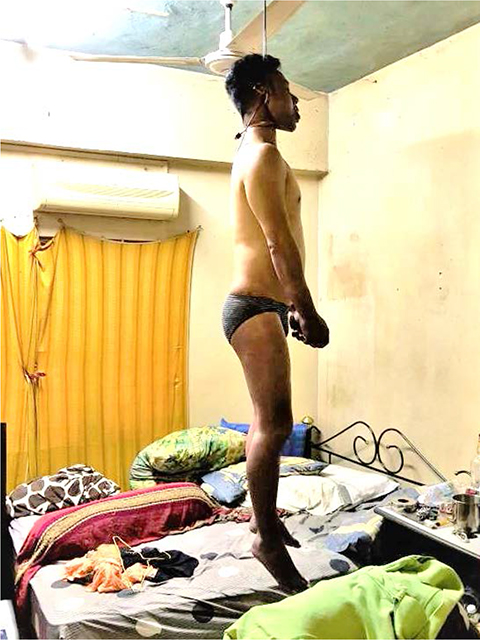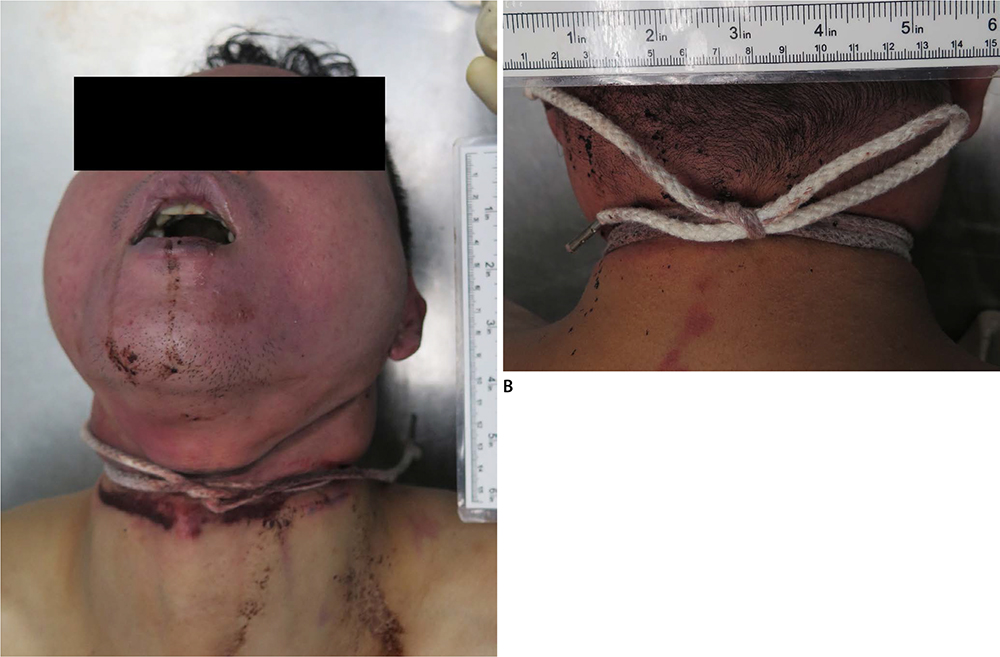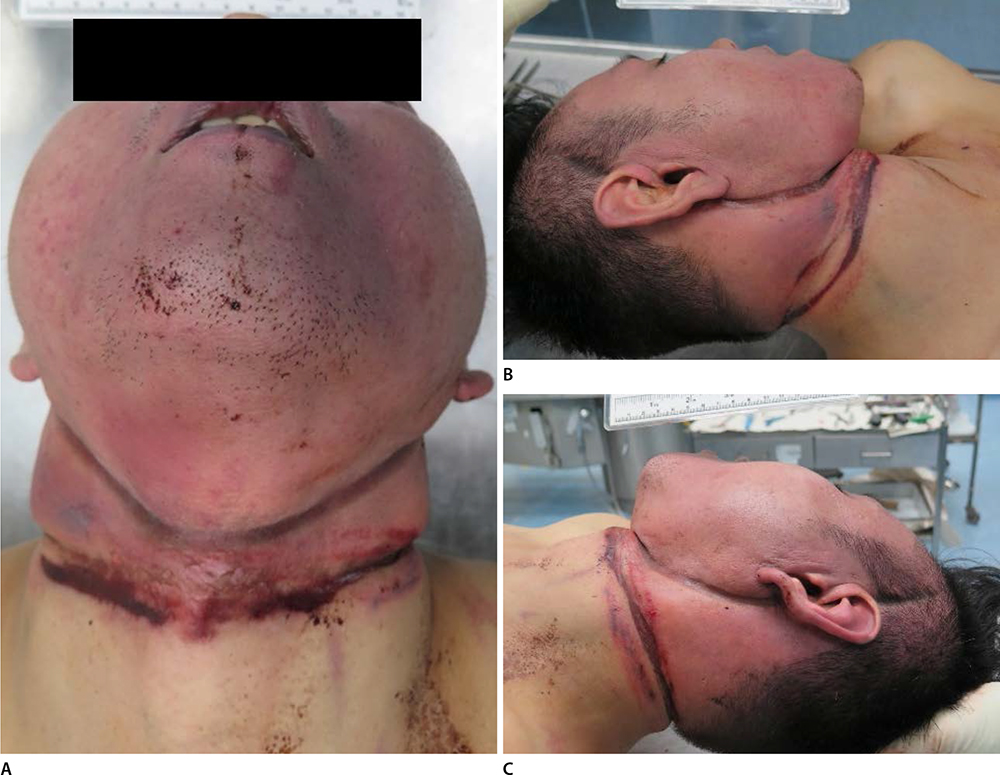Korean J Leg Med.
2019 Aug;43(3):106-110. 10.7580/kjlm.2019.43.3.106.
A Complex Suicide by Ligature Strangulation and Hanging Using Two Different Ligatures
- Affiliations
-
- 1National Institute of Forensic Medicine, Hospital Kuala Lumpur, Kuala Lumpur, Malaysia. kuna0921@yahoo.com
- 2Department of Forensic Medicine, Hospital Pulau Pinang, George Town, Malaysia.
- KMID: 2456273
- DOI: http://doi.org/10.7580/kjlm.2019.43.3.106
Abstract
- Hanging is the most common method of suicide in Malaysia. However, hanging in combination with suicidal ligature strangulation is uncommon. The victim is a 31-year-old man, with no previous medical or psychiatric disorders. He accomplished self-strangulation using a shoelace and hanging himself with a High-Definition Multimedia Interface cable. Three loops of a shoelace ligature were present around the neck. A single knot was present on the front, and a double knot at the back of the neck. Internal examination of the neck revealed small bilateral hemorrhages of the sternocleidomastoid muscles. No laryngeal cartilage or hyoid bone fractures were observed. No other evidence of injury was noted other than moderate pulmonary edema. The post-mortem toxicology results were negative. The cause of death was ascertained as neck compression due to ligatures. Scene assessment and post-mortem findings concur with suicide. This report describes an unusual case of suicidal ligature strangulation, in combination with hanging using two different ligatures.
Keyword
MeSH Terms
Figure
Reference
-
1. Hayati AN, Kamarul AK. National Suicide Registry Malaysia (NSRM). Med J Malaysia. 2008; 63 Suppl C:50–54.2. Varnik P. Suicide in the world. Int J Environ Res Public Health. 2012; 9:760–771.3. Di Maio VJ, Di Maio D. Forensic pathology. 2nd ed. Boca Raton: CRC Press;2001. p. 23p. 245–275.4. Polson CJ. Strangulation: accident, suicide or homicide. J Forensic Sci Soc. 1961; 1:79–78.5. Tzimas I, Bajanowski T, Pollak S, et al. Suicidal ligature strangulation using gymnastics bands. Int J Legal Med. 2014; 128:313–316.
Article6. Maxeiner H, Blockholdt B. Homicidal and suicidal ligature strangulation: a comparison of the post-mortem findings. Forensic Sci Int. 2003; 137:60–66.7. Badiadka KK, Kanchan T, D'Souza DH, et al. An unusual case of self-strangulation by ligature. J Forensic Leg Med. 2012; 19:434–436.
Article8. Atilgan M. A case of suicidal ligature strangulation by using a tourniquet method. Am J Forensic Med Pathol. 2010; 31:85–86.
Article9. Pramod Kumar GN, Arun M, Manjunatha B, et al. Suicidal strangulation by plastic lock tie. J Forensic Leg Med. 2013; 20:60–62.
Article10. Demirci S, Dogan KH, Erkol Z, et al. Suicide by ligature strangulation: three case reports. Am J Forensic Med Pathol. 2009; 30:369–372.11. Gaur JR, Verma RK, Thakur GC. Suicidal strangulation. Med Sci Law. 1992; 32:55–56.12. Palmiere C, Risso E, van Hecke O, et al. Unplanned complex suicide by self-strangulation associated with multiple sharp force injuries: a case report. Med Sci Law. 2007; 47:269–273.13. Ashley CW. The Ashley book of knots. New York: Doubleday, Doran & Co.;1993. p. 220.
- Full Text Links
- Actions
-
Cited
- CITED
-
- Close
- Share
- Similar articles
-
- Unusual Suicide Cases of Asphyxiation by Ligature within the Vehicle
- Suicidal Strangulation by Ligature : Three Case Reports
- Diagnostic Value of Sternocleidomastoid Muscle Hemorrhage on Clavicular Periosteum in Hanging Deaths
- Self-Ligature Strangulation by Utilizing Recliner
- An Unusual Hanging Case Mistaken as Homicidal Strangulation in the Scene of a Fire




